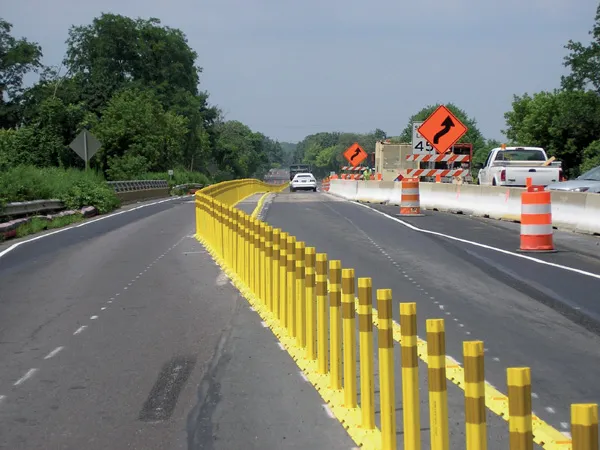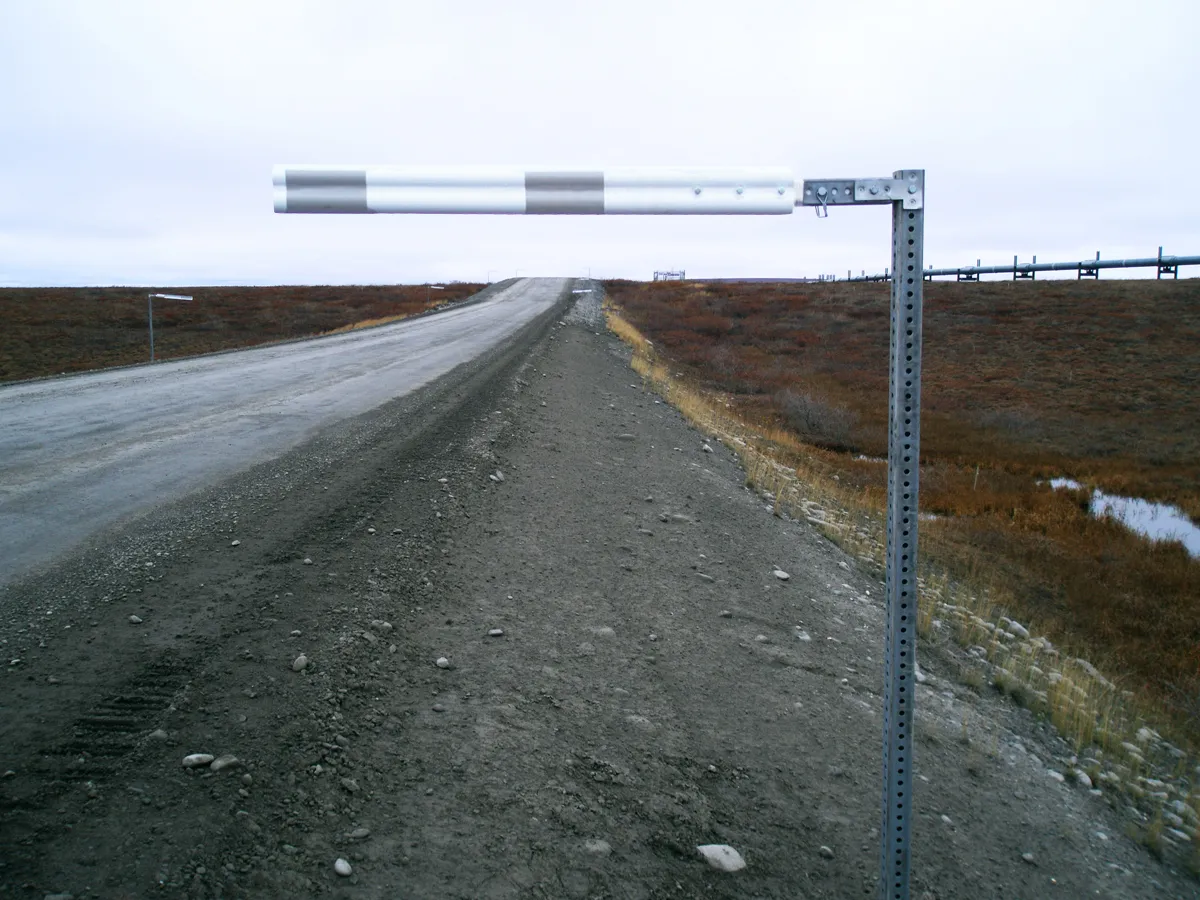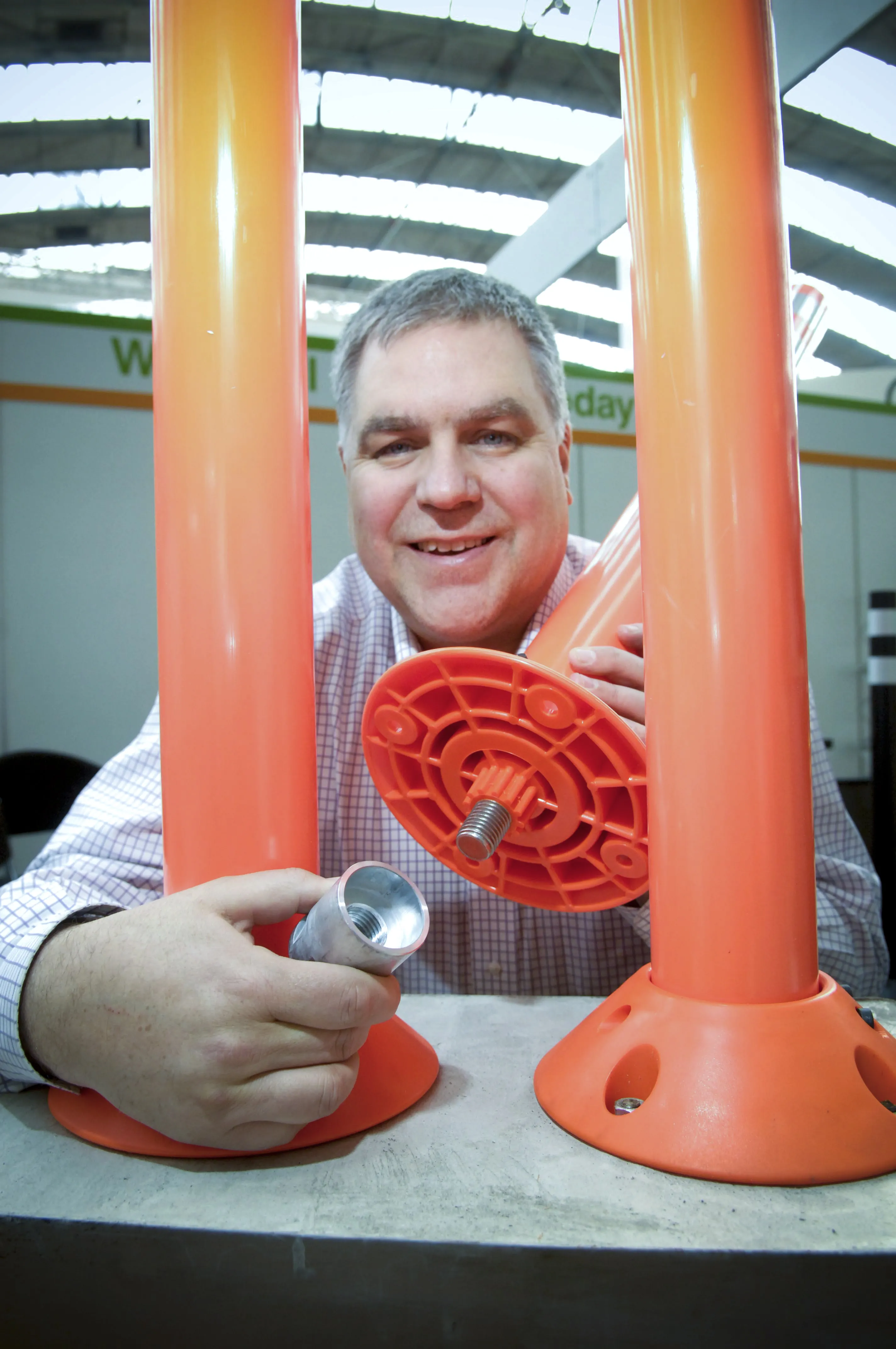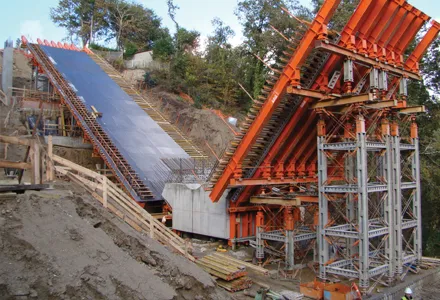A lane separation system from Pexco is guiding more than 6,000 vehicles each day through changing traffic patterns.
February 9, 2012
Read time: 2 mins

A lane separation system from Pexco is guiding more than 6,000 vehicles each day through changing traffic patterns.
The company's Philadelphia plant in Pennsylvania, USA, 3km from the installation site in Falls Township, served as a pre-assembly and materials off-site storage location.Some 3,669m of FG 300 Interstate Grade Curb System delineates the detour along two critical 800m and 1.6km long sections of the five-bridge reconstruction job.
Designed for use wherever pavement markings are not sufficient to provide safe channelisation, the system includes 4,000 modular raised curb sections and channeliser posts that enable
While
The Pexco installation is part of a US$12.4 million PennDOT project that began in July 2010 to rehabilitate five bridges in Bucks County along Tyburn Road, and this was expanded when a hole developed on the shoulder of the concrete bridge deck above an Amtrak line in February 2010. The construction includes replacing the decks and beams on each structure and rehabilitating the abutments and piers.
"The curb sections and upright posts have been tested to withstand 50 impacts at 60mph [96.5km/hour]," says Pexco. The FG 300 Surface Mount Channeliser Post is made of polyurethane, and creates a picket fence structure that is quicker to install and easier to maintain.









